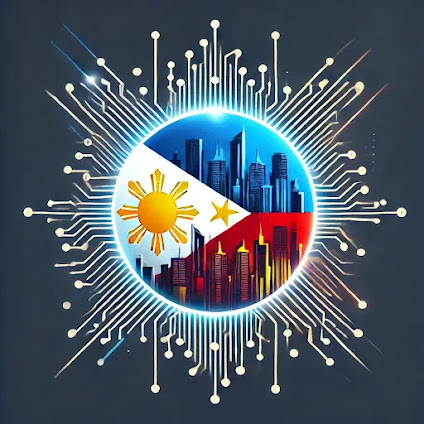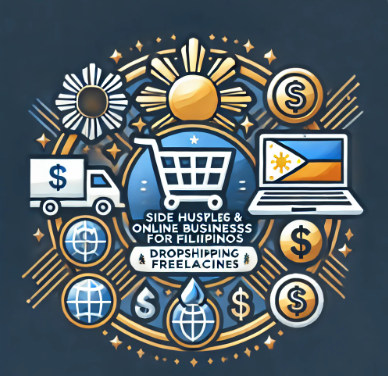Impeachment Trial of Vice President Sara Duterte: A Defining Moment in Philippine Politics
The Philippine Senate is set to begin the highly anticipated impeachment trial of Vice President Sara Duterte in June, following the reopening of Congress. This marks a significant and historic moment in the country's political landscape, as Duterte faces multiple serious charges, including conspiracy to assassinate the president, large-scale corruption, and failure to take a firm stance against China's growing influence and assertive actions in the South China Sea.
The impeachment proceedings gained momentum after the House of Representatives swiftly transmitted the case to the Senate, with over 215 lawmakers expressing their support for moving forward with the trial. The overwhelming backing from the legislative body highlights the gravity of the accusations against the vice president and the urgency of ensuring accountability at the highest levels of government.
Political analysts and opposition leaders argue that the delay in the Senate trial raises concerns about due process and the integrity of democratic institutions. Some critics believe that prolonging the proceedings could undermine public trust in the government and allow key figures to evade responsibility. On the other hand, Duterte’s supporters claim that the impeachment is politically motivated, aimed at weakening her influence and damaging her family’s stronghold in Philippine politics.
As the trial approaches, the nation remains divided, with citizens, legal experts, and political observers closely monitoring developments. The outcome of this trial could have far-reaching implications, not only for Duterte’s political career but also for the country’s governance, international relations, and the rule of law. With tensions rising and public interest at an all-time high, the Philippine Senate is under pressure to ensure a fair, transparent, and impartial trial that upholds justice and strengthens democratic principles.
International Naval Drills: Strengthening Alliances Amid Rising Tensions in the Indo-Pacific
The Philippines, in collaboration with key international allies—the United States, Australia, and Japan—has commenced large-scale naval exercises within its Exclusive Economic Zone (EEZ). These drills, which are part of a broader strategy to strengthen maritime security and defense cooperation, aim to enhance the interoperability of the participating nations' armed forces, ensuring a coordinated and effective response to potential threats in the Indo-Pacific region.
The joint military exercises come at a time of heightened geopolitical tensions, particularly concerning China's increasing assertiveness in the South China Sea. Beijing has repeatedly laid expansive territorial claims over vast portions of the resource-rich waters, including areas well within the Philippines' EEZ. The Chinese government has expressed strong opposition to these drills, accusing Manila of aligning with foreign powers to destabilize regional security. Chinese state media have also issued warnings that such military activities could escalate tensions and provoke unintended confrontations.
Despite China's objections, Philippine officials have defended the naval exercises as a necessary measure to safeguard the country's sovereignty and maritime interests. The drills include simulated combat scenarios, joint patrol operations, and intelligence-sharing exercises, all of which are designed to improve the readiness of participating forces in deterring external threats. Philippine Defense Secretary Gilberto Teodoro emphasized that the country has the right to strengthen its defense posture, particularly in light of China's increasingly aggressive actions in disputed waters.
The United States, Australia, and Japan have reiterated their commitment to supporting the Philippines in maintaining a free and open Indo-Pacific. The presence of these allied forces in the region underscores a broader strategy to counterbalance China's growing influence and to reaffirm international support for upholding the United Nations Convention on the Law of the Sea (UNCLOS), which Beijing has been accused of disregarding.
As the naval drills continue, diplomatic tensions between the Philippines and China remain high. Analysts predict that Beijing may respond with increased military activities, including the deployment of coast guard and militia vessels in contested areas. While the Philippines seeks to bolster its alliances with like-minded nations, it must also navigate the complexities of regional diplomacy to avoid unnecessary escalation.
These military exercises signal a clear message: the Philippines, backed by its allies, is committed to defending its sovereign rights and maintaining stability in the Indo-Pacific. The coming months will be crucial in determining how Beijing reacts and whether diplomatic efforts can prevent further conflict in one of the world’s most contested maritime regions.
Tragic Plane Crash in Maguindanao del Sur: U.S. Service Member and Defense Contractors Killed
A tragic aviation incident unfolded in Maguindanao del Sur, where a U.S. military aircraft crashed into a rice field, resulting in the deaths of a U.S. service member and three defense contractors. The aircraft, reportedly engaged in a routine intelligence, surveillance, and reconnaissance (ISR) mission, went down under still-unclear circumstances, prompting an immediate investigation by both U.S. and Philippine authorities.
According to initial reports, the aircraft was conducting operations in coordination with the Philippine government as part of ongoing defense and counterterrorism initiatives in the region. The presence of U.S. military personnel in Mindanao has been a key component of joint efforts between the two nations to combat extremist threats, particularly in areas historically associated with insurgent activities.
Eyewitnesses from nearby villages described hearing an unusual engine noise before the aircraft plummeted into the field, erupting into flames upon impact. Local authorities and emergency responders rushed to the crash site but were unable to rescue any survivors. The remains of the victims have since been recovered and will be repatriated following identification and diplomatic procedures.
The cause of the crash remains unknown, and military officials have not ruled out mechanical failure, adverse weather conditions, or other possible contributing factors. A full investigation is underway, with both U.S. and Philippine experts analyzing flight data, communications, and wreckage evidence. The U.S. Embassy in Manila has expressed condolences to the families of those lost in the accident and reaffirmed its commitment to cooperation with Philippine authorities in determining the exact circumstances behind the tragedy.
The incident has sparked discussions regarding the risks involved in ISR operations and the broader implications of U.S. military presence in the region. While the United States and the Philippines maintain a longstanding security alliance, incidents like this raise questions about operational safety and coordination.
As the investigation progresses, both governments will work to ensure transparency and provide updates to the public. For now, the crash serves as a somber reminder of the dangers faced by military personnel and defense contractors engaged in complex and often high-risk missions.
Landslide in Davao de Oro:
Davao de Oro, formerly known as Compostela Valley, is a province in the Philippines located in the Davao Region in Mindanao. Its capital is Nabunturan. It used to be part of the province of Davao del Norte until it was made a separate province in 1998. It is situated in the middle eastern part of the Davao Region, bounded by Agusan del Sur on the North, Davao Oriental on the East and the South, Davao Gulf on the Southwest, and Davao del Norte on the West.
The recent landslide in the village of Masara, situated in Maco town, Davao de Oro, has resulted in a tragic loss of life and left many more people in peril. At least six individuals have been confirmed dead, and 46 others are still missing, with most of the missing believed to be miners. These miners had been waiting in two buses for transportation to return home when the landslide struck. It’s reported that the event happened during the early hours, catching people off guard.
Rescue operations are actively underway, with search teams combing through debris in the hope of finding survivors. The situation remains tense, as the affected area is difficult to access, and heavy rainfall in the region complicates rescue efforts. Despite the challenges, local authorities and volunteer teams are working tirelessly to recover the missing and offer assistance to the survivors.
More than 750 families from the surrounding areas have been evacuated to safer locations, as the region remains vulnerable to further landslides and flooding. These families now face the daunting task of rebuilding their lives, with many losing homes and livelihoods in the disaster. Relief efforts are being coordinated by various agencies, including local government units and humanitarian organizations, to provide immediate aid, such as food, water, and medical supplies.
This tragic event highlights the vulnerability of communities in areas prone to natural disasters, especially in regions with active mining operations. Many people in these communities rely heavily on mining as a livelihood, making them particularly vulnerable to such incidents. It also underscores the need for more effective disaster preparedness and response systems, as well as stricter enforcement of safety regulations, particularly in areas with hazardous activities like mining.
As rescue operations continue and efforts to support the survivors move forward, the nation must stand together to provide assistance and solidarity to the people of Davao de Oro. Families have lost loved ones, and many still hope for news of their missing relatives, so it’s crucial to continue providing both immediate aid and long-term recovery support.
Bombing in Marawi City
The recent bombing in Marawi City, during a Catholic Mass at a university gymnasium, is another tragic event that has shaken the country. At least four people have been confirmed dead, and over 50 others have been injured, many of them critically. The explosion occurred in a public space during a religious service, a time when the community was gathering in peace. The attack is not just an assault on individuals but on the sense of safety and security for the people of Marawi and the wider Filipino community.
President Ferdinand Marcos Jr. has condemned the attack, labeling it as an act of terrorism carried out by "foreign terrorists." The attribution to external forces suggests that the bombing may be part of a larger, more complex threat, adding to concerns about security in the southern Philippines, which has historically faced challenges from various insurgent and extremist groups. The Philippine government has vowed to strengthen its security measures, and there has been an immediate uptick in vigilance, particularly in the southern regions and around the capital, Manila, to prevent further attacks.
This bombing follows a series of similar incidents that have targeted public spaces, raising fears that these groups may be trying to sow instability and fear. The attack in Marawi, in particular, resonates deeply given the city’s history. Marawi was the site of a devastating battle in 2017, when Islamic militants laid siege to the city, leaving a trail of destruction that took years to recover from. The psychological and emotional impact of this latest bombing is profound, as it reopens wounds from the earlier conflict, especially for those still rebuilding their lives.
Local authorities, together with national forces, are working on investigating the bombing and identifying those responsible. The government has promised to bring the perpetrators to justice while continuing to strengthen the security apparatus in vulnerable regions. Meanwhile, the victims and their families are receiving support, and there’s a call for solidarity across the country to resist the forces of terror and division.
The attack underscores the continuing security challenges the Philippines faces, especially in its southern regions. While the government takes steps to combat these threats, the situation highlights the need for continued vigilance and for strengthening both security and social cohesion to protect vulnerable communities from violence. The people of Marawi, who have already endured so much, will now face the long road to recovery yet again, as they seek to heal from this senseless attack.











